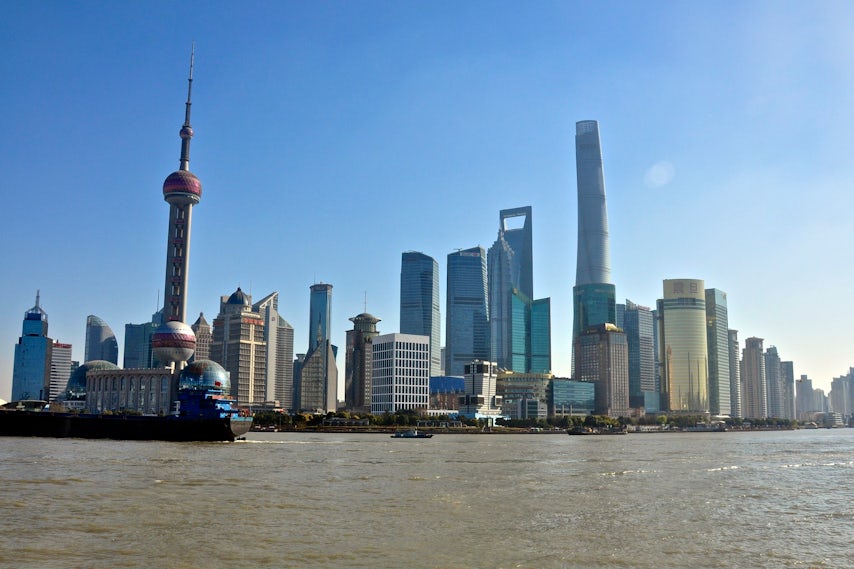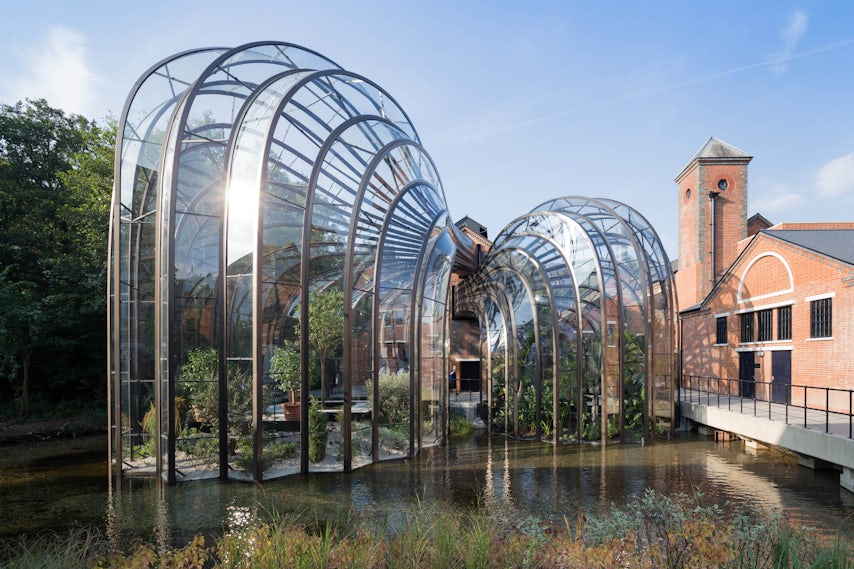When considering the merits of a city’s skyline, the first question to be asked appears laced with a sense of architectural apathy: Why does it even matter?
The answer is twofold. On a visceral level, a city’s skyline forms an intrinsic part of its identity and the identity of everyone living within that place. If people are proud of their skyline and their city as a whole, it is more likely to be cared for, looked after and maintained, and this civic pride transcends sociopolitical divides. As a consequence, city councils and governments are all too aware of the effects — both positive and negative — that an evolving skyline can have on their public image.

Shanghai’s fast-changing skyline, including Gensler’s Shanghai Tower
In physical terms, a skyline reads as a gargantuan architectural billboard for each city. It is frequently perceived as a manifestation of a city’s economic standing: Businesses and residential developers that commission high-tech, high-rise designs hope that such conspicuous expenditure will act as a self-fulfilling prophecy, transforming a perception of commercial power into the real thing. Therefore, a skyline can also be a very real sign of the times in terms of socioeconomic stability (or the lack of it) and collective hope for the future.
Both the visceral and physical driving forces behind skylines have a direct impact on each person walking along at street level, so their makeup is incredibly significant: A look at the best and worst skylines around the globe can reveal so much about how the urban landscape can affect each and every one of us.

London’s future skyline, rendering via the Guardian
A natural starting point for the discussion lies in the heart of the United Kingdom’s capital: London has seen its skyline transforming at an extraordinary rate in recent years. Planning regulations were put in place many years ago in an effort to encourage the growth of “clusters” where tall buildings are considered acceptable or even desirable, but these zonal envelopes have given rise to some unforeseen consequences.
As we discussed in last month’s article on Wilkinson Eyre’s latest London skyscraper, developers are shimmying up incredibly close to each other in an attempt to circumvent the regulations. This has led to a swathe of buildings proposed for the “Eastern City Cluster” that “resemble a single wall of reflective glass, a gargantuan mirror into which the planners will stare and wonder: What has become of this great city?”

Rendering of Archipelago 21 in Yongsan, Seoul, via Studio Daniel Libeskind
While London’s skyline illustrates the perils of a piecemeal urban-planning strategy, a project on the other side of the world proves that similar issues can emerge even if architects are able to start with a blank canvas. In Seoul, South Korea, Daniel Libeskind’s Yongsan Master Plan was populated by the unfettered dreams of a veritable galaxy of Starchitects, aiming for a skyline full to the brim with optimistic tropes of futurism.
As Architizer reported almost two years ago, the resulting composition is far from cohesive, reading as “a chaotic cluster of disparate entities.” The imagined horizon is broken up by a collection of conspicuously iconic high-rise designs including Project R6 by REX and BIG’s Cross # Towers (a towering ode to our social media age in the form of a tweeted hashtag).
It had appeared unlikely this outlandish project would ever make it from rendering to reality — its $28-billion price tag looked increasingly fantastical as the global economic crisis took hold in 2008 — but new life could yet be breathed into Yongsan as markets recover. If that is the case, Seoul could also see its riverfront populated with novel silhouettes, something akin to the idiosyncratic International Business District in Moscow, Russia.

International Business District, Moscow, via City-Data.com
Surely, though, a skyline that grows organically over many years — with new buildings designed to respond to their historical context — can foster a stronger sense of identity and a more nuanced architectural landscape.
When looking for a successful example along these lines, one can look to a city like Frankfurt, Germany, its complex past juxtaposed with a considered mix of modern high-rise designs. The tallest two buildings in the city both arose from robust responses to their internal function, Coop Himmelb(l)au’s European Central Bank acting as a quirky counterpoint to Foster + Partners’ Commerzbank Headquarters.

Frankfurt by night, via Wikimedia (Nicolas Scheuer)
Neither building is overtly iconic, but both form sophisticated architectural statements which symbolize the city’s position as a key economic center in Europe. General consensus amongst the architectural community appears to correlate with this sentiment: Frankfurt finished top in a poll on Europe’s favorite skyline, garnering almost one third of all votes cast.
Skylines which evolve slowly inevitably give rise to individual moments of architectural triumph, controversy and outright animosity. The most famous skyline of them all, that of New York, is a case in point: A strong sense of nostalgia is attached to the Big Apple’s historic high-rises, the Empire State Building and Chrysler Building still occupying a place in the collective heart of the city.

New York City, via Condé Nast Traveler
This nostalgia could partly explain the towering skepticism that greets the unveiling of so many modern skyscrapers across the city: Rafael Vinoly’s skyline-altering 432 Park Avenue has been the subject of polarized opinions around New York, while SOM’s One World Trade Center, now the tallest building in the United States, has been at the center of feverous debate for the past decade. Those with planned towers will undoubtedly undergo the same scrutiny: Passionate views for and against Foster + Partners’ “The One,” SHoP’s skinny skyscraper and BIG’s 2 World Trade Center only go to show how crucial these issues are on a deep, emotional level.
With a blend of architectural stalwarts and a host of new arrivals, Manhattan’s unique silhouette stands as the quintessential example of how a skyline can form an honest reflection of a city’s complex, often turbulent history, on display for the world to see. In this sense, it can also be seen to represent the collective personality of its population over the years. For this reason, in spite of all its flaws, New York’s undulating landscape of architectural peaks and troughs might just be the closest thing to a perfect skyline one could hope for.
Top image: Hong Kong skyline, via Wikimedia









